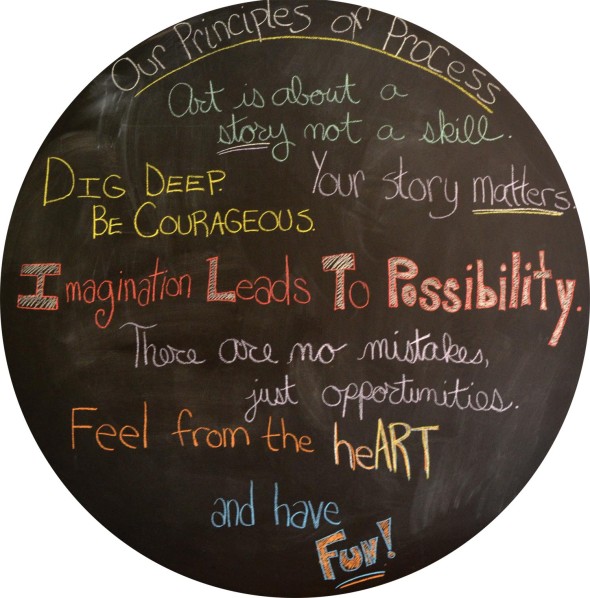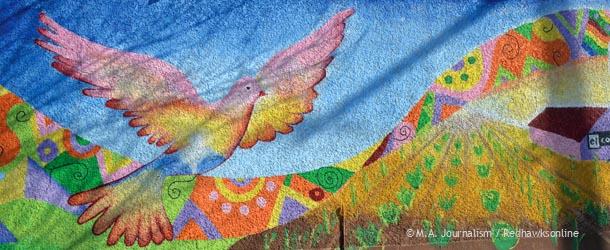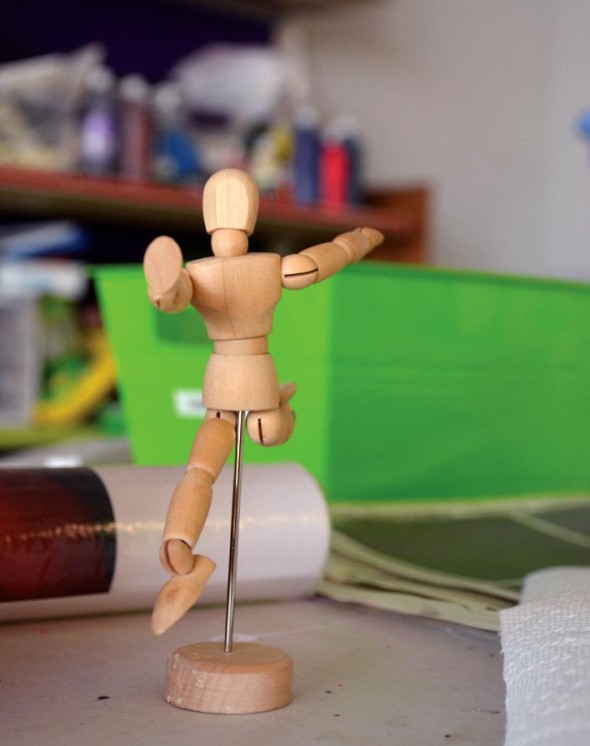From pain to healing, local founder of a youth art organization shows the power of creativity
“I heard a really loud clank and it was an immediate free fall,” said Lindsay Walz, a survivor of the 2007 35W Bridge collapse. “My car basically took a nosedive into the river.”
Walz stared forward with glossy eyes as she calmly recounted the event from seven years ago.
“My front passenger wheel was the first to hit the bottom of the [Mississippi] river and as my car went in, the water came up into the cabin of the car through the engine. I stopped falling and was drowning. I unbuckled my seat belt, that was the only clear thought that I had,” she said. “Then I just started to push on surfaces of the car [hoping] for a broken window or something, but nothing seemed to give way. My body started to gasp for air and do that instinctual thing. I kind of gave up. I went from fighting to giving up and I just accepted that was where I was going to die.”
But just as Walz began to believe she might have died, her car floated to the river’s surface and she was rescued. With the help of a construction worker who had fallen with the bridge, she made it to a section of the bridge where she could stay until she could reach the riverbank. While waiting for emergency medical help, Walz sat in excruciating pain.
With no ambulances available, she was rushed by pickup truck to the hospital. Suffering from a broken back, she spent five days there and a long five months in a back brace.
“After that five month period of really focusing on my physical health, it really became about my mental health and [Post Traumatic Stress Disorder] that I was dealing with,” said Walz.
One of the ways that Walz began the process of healing emotionally was through an art class called Soul Painting.
“It wasn’t art therapy because it wasn’t a therapist saying ‘paint stuff’ and then we’re going to talk about it or anything like that,” said Walz. “It really was about me having an outlet to tell my story to myself more so than to anyone else.”
Art has been an ever present expression of human emotion and experience throughout history. From telling a story to visualizing a feeling, art works as a means of communication. In the early 1900’s, German psychiatrist Hans Prinzhorn studied the art made by those with mental illnesses and found art to be a way “to actualize the psyche and thereby build a bridge from the self to others.” The emergence of art therapy has shown the importance of the “ability to translate whatever moves [a person] into a picture in such a way that a viewer may participate in the experience,” as Prinzhorn states. But developing that ability isn’t always easy.
“It takes a lot of guts,” said lower school art teacher Ronie George. “People are lucky if they can find a place to do art in a healthy environment because art is a door that you can open for yourself. First, you just have to start.”
Walz used her experiences to help others, children from the ages of 10 to 18 in particular, to open that door. On Cedar Avenue stands courageous heARTS, an organization founded by Walz where art classes and open studios are held for the community’s youth. A focus of the organization is to provide a safe space for the exploration of art.
“One of the things we do here is just make it open ended [with] no expectations of what you’re going to do when you walk through the doors,” said Walz, “but if there is that opportunity for healing that you need to experience like I did, that you can do that.”
However, trauma on the scale of a bridge collapse isn’t necessary.
“When people find out that I am a survivor of the bridge collapse, they’re often quick to minimize their own harms or hurts because ‘it’s not as bad as what I went through,'” said Walz “I think thats something that we all do naturally. But its all relative. You can’t compare [pain]. One of the reasons that this place is open to all kids is because everybody has heart stuff.”
George also recognizes how much a place like courageous heARTS can do.
“She came up with having a safe place for kids to do art because she knows how important it is for someone to throw down a piece of paper and

The “Principles of Process” at courageous heARTS are written in chalk on the wall of the studio for kids to see as they work. Photo by Maddie Binning.
some paint brushes so that you can just do your thing if you need to,” said George about courageous heARTS. “Because sometimes I don’t think people really know what they’re storing inside of them that’s making them sad or angry or afraid. If you just happen to come across a place and be willing to go through that door, [it] starts a process of cleaning up the [stuff] within yourself.”
This process of expression is one that has been an important part of senior Griffin Overbye’s life.
“Art has been a great outlet for me to express things that I can’t quite put in words,” said Overbye. “I think that art is very valuable because as cliché as it sounds, it gives people the chance to express themselves freely and openly. It’s important to exercise creativity because it’s a mental process that can not only organize your thoughts but can also lead to discoveries with oneself and their surrounding environment.”
Local psychologist and artist Joan Ungar has been involved in the art therapy community in the past and now uses art as a tool in her own practice. Ungar recognizes the ties between mental health and being creative.
“There’s a big connection between creativity and mental illness,” said Ungar. “Creativity is a natural way to heal.”
But you don’t have to be dealing with mental illness to reap the benefits of creativity.
“[It helps us to be creative] in a lot of different ways,” said Ungar, “[whether] through dance, through acting, through science, through writing. It doesn’t have to be art. It’s something we all have and do need to access because it means we’re more of who we are. It brings in the soul and the soul helps balance the body.”
Walz felt this balance as she made progress in her recovery through one of her paintings.
“I started the painting as a monster and that’s what I really had started to feel like,” said Walz. “I was getting angry about every little thing. It didn’t seem connected to anything.That particular painting, I painted over a six week period of time and every week I came back to it and through what was happening in my life, I was able to change the image. It was a monster transforming back into a person. It was really empowering to me to realize I was a good person and I do have a good heart and those pieces of me are still there even though they feel like they were left behind with the bridge. That was really a turning point for me and my own healing.”


